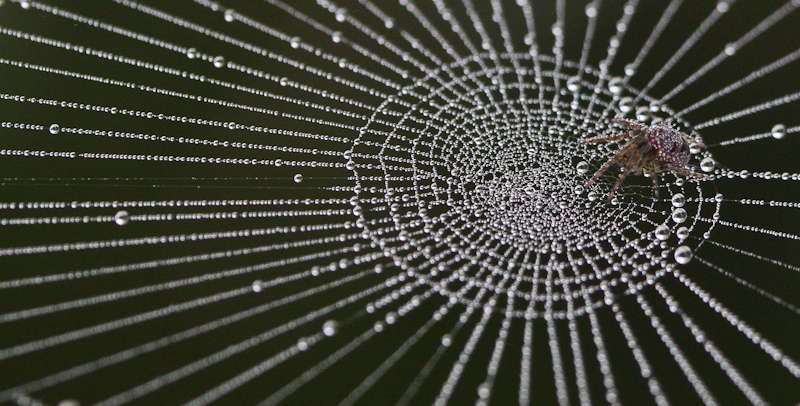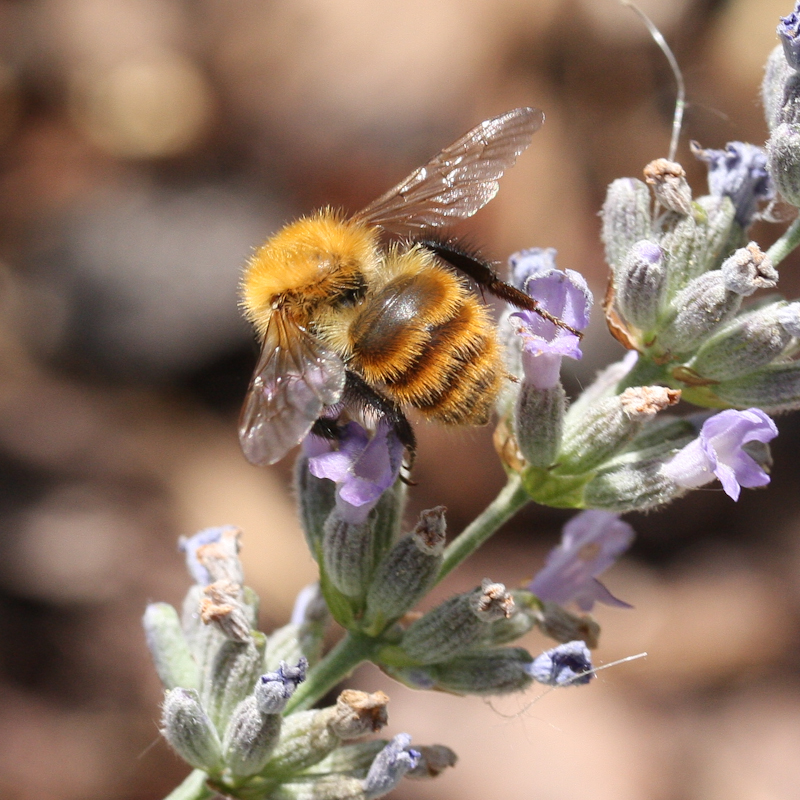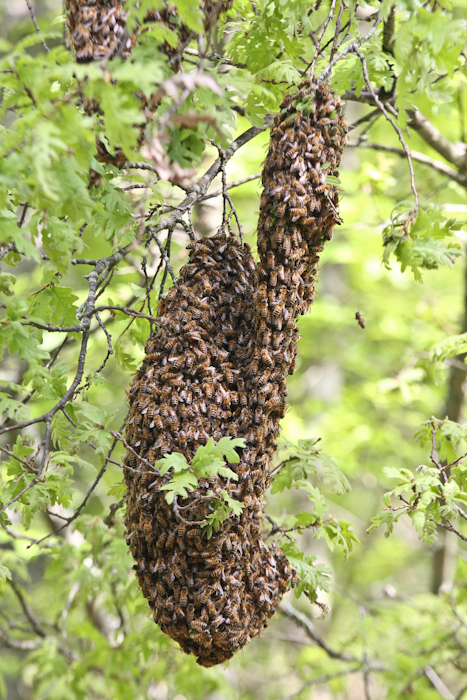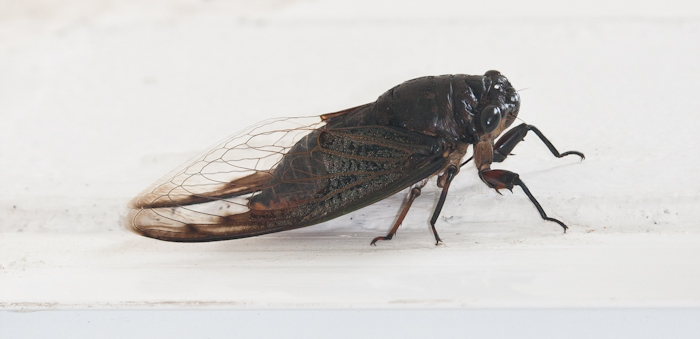Waiting patiently
 This dew-soaked little red spider is waiting motionless in its web for something tasty to arrive.
This dew-soaked little red spider is waiting motionless in its web for something tasty to arrive.
Canon 40D with Canon EFS f2.8 60mm macro lens, ISO500, 1/200 at f4
 This dew-soaked little red spider is waiting motionless in its web for something tasty to arrive.
This dew-soaked little red spider is waiting motionless in its web for something tasty to arrive.
Canon 40D with Canon EFS f2.8 60mm macro lens, ISO500, 1/200 at f4

Close up of a small bee busying itself with the lavender.
Canon 40D with Canon 60mm 2.8 EFS Macro lens ISO400 1/400 f8

This swarm of honey bees picked out a tree in the valley below our house in Tuscany and has spent the day growing and growing. The were initially several small clusters that eventually fused into one large shape. How long they stay remains to be seen. I took shots from all angles and at all magnifications! – without getting too close, although apparently the bees are not aggresive when they are swarming like this. Some of the shapes resemble other creatures – there’s a leopard gracefully descending the branches, and this one – a sloth or perhaps an orang-utan swinging by one arm.
What is less obvious from the photos is the constant movement over the surface of the swarm and the low buzz surrounding it.

It seems there are dozen of types of cicadas. Whole books are written about them. Their main claim to fame, apart from being a delicacy in Thai and other SE Asian cuisine, is that they are the noisiest bugs around. That fact I can certainly attest to.
We have an apartment in a lovely setting about a mile inland from Kamala Beach in Phuket. We are up a hill so we get a panoramic view of the bay. To the left and rear of our apartment is rain forest, good virgin stuff with hugely tall trees, including, in the season, durians that bear the most foul smelling fruit in the world. There are large Asian squirrels to be seen, some bird life. And cicadas. Millions of them. They are quite staggeringly noisy insects with a tympanic call that can carry a mile that the males make to attract the females. They start at daybreak with a brief morning chorus of about twenty minutes. Then around early – mid afternoon there is a cacophony that is quiet deafening. And then at sunset there is the finale that sounds like an orchestra of power saws in unison. Each species call is slightly different and a female of a given species will only take note of the call from a male of the same species.
Once they have finished, they look around, see the lights on and try to get into the apartment, banging against the windows and screen doors. Looking at that prehistoric exoskeleton, headaches clearly aren’t a problem.
I found this fellow one morning on the wall outside the bedroom. He was patient, allowing me to take many shots. After that, I gave him a gentle nudge under the wings and he flew away, the beating of the wings sounding like a helicopter.
Head to end of folded wingtips, he was about 2.5″ long.
Canon 40D with Canon 70-200mm f4 IS lens at 116mm and with a Canon 12mm extension tube. ISO800 1/100 at f6.3 with flash from the built-in flashgun. Adjusted and cropped in Lightroom
Location: Phuket, Thailand

This Crowned Lapwing was seen at the Solio Game Reserve, a private 18000 acre reserve just north of Nyeri in central Kenya. Solio has been successful in breeding black rhino and over 120 black and white rhino live there. One appealing feature of the reserve is that you just pay your entrance fee and drive yourself around. It’s quiet and has none of the zebra stripe painted jeeps full of tourists vying for position to get the next shot. At Solio, you just take your time.
According to ‘Birds of East Africa’ by Stevenson and Fanshawe, ‘the crowned lapwing is a bird associated with dry country and grasslands, best identified by head, breast and wing markings. All resident species are known as plovers in Southern Africa. The Crowned Lapwing, (Vanellus coronatus) is 31cm, 12″, has a smart head pattern with a black cap and white crown ring standing out at long distance; the ring accentuates the flat head and steep forehead. It is alert and upright, with yellow eyes and bright red legs.’
Canon 1DMkII with Canon 300mmf2.8L IS lens and x2 extender; ISO400 f5.6 1/640

I photographed this fine fellow years ago in the days of film. It was our first trip to Kenya and the Masai Mara, and what a trip!
He was relaxing in the bush at around 9am, having long finished his breakfast. The sun was playing through the branches and highlighting his fur in gloriously brilliant patches. He was totally unfazed by us as we sat in the jeep watching him in awe for ages. Later, he raised himself, stretched and wandered to plan lunch.
Canon EOS3 with Canon 300 f2.8L lens on Fuji transparency film. Scanned and tweaked in Lightroom.